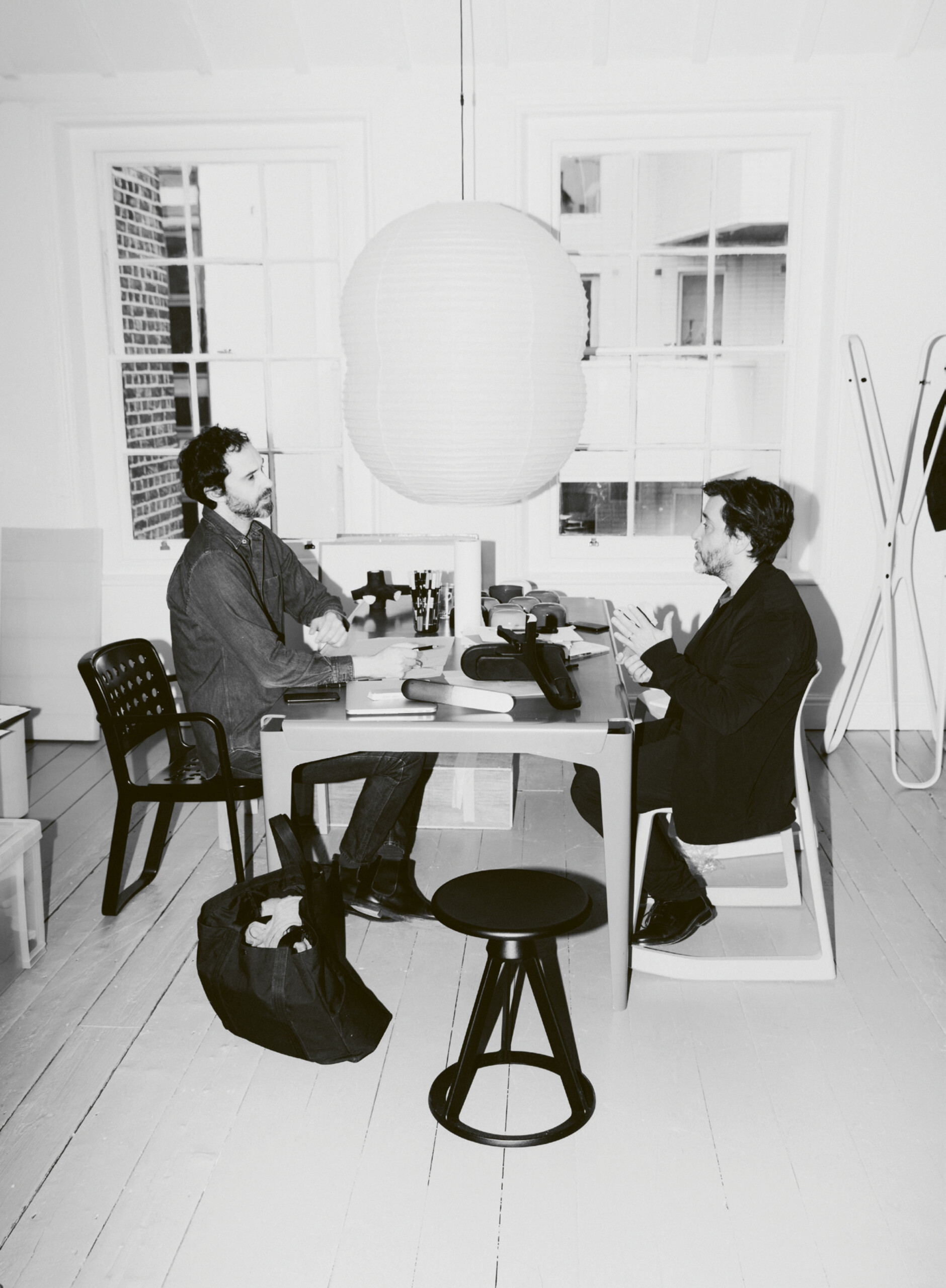
Questioning
the feasible?
Intuitive understanding: Edward Barber and Jay Osgerby are the most
successful British designers since the beginning
of the Industrial Revolution. Their work challenges the boundaries of design.


Edward Barber and Jay Osgerby love creating models and regard them as the key to
understanding design. And so they cut, glue and draw every last detail.
There’s no shortage of work for Edward Barber and Jay Osgerby. Both in their late 40s, together they form the British design industry’s dream team, producing work that is clear and focused, yet always with a twist that makes their designs instantly recognisable. Take the distinctive perforated torch they designed for the London 2012 Olympic Games, for example, which defied the strongest gusts of wind and freezing temperatures. Or their furniture designs, some now regarded as modern classics—such as the “Tip Ton” chair, a provocatively simple solution to the need for greater movement at school or in modern offices: the chair tilts back and forth, reminiscent of Grandmother’s rocking chair of yesteryear.
Their offices are located in what was once the centre of the British furniture industry, Shoreditch in London. In this think tank humming with action, the two of them bounce ideas off each other. How do Edward Barber and Jay Osgerby see the office of the future? And what will become of work when we’re suddenly all compelled to be creative and answer emails wherever we happen to be, constantly updating our blogs with a stream of new images? The two British designers offer an insight into their world and its nature, international and inclusive despite, or perhaps even because of, Brexit. Such is the message from the world of 21st century design.
We go up. A wooden staircase. And another. The boards creak, the doors have portholes. The feeling of actually being on board a ship, about to set sail, grows stronger with every new storey. Right at the top, directly under the roof, Edward Barber and Jay Osgerby are working, two friendly, salty sea dogs with grey-flecked beards and disarming smiles. Edward Barber proffers a hand, saying, “Hello, and welcome to our design studio!” Jay Osgerby jokes, “Welcome to the United States of London!” They could hardly be more different—yet are so similar. Lanky Edward Barber towers above Jay Osgerby, a good one head taller than his partner. Together, they make up the dream team of the British design industry.
They intuitively understand each other. Whatever they take up is transformed into something special, into objects with character. Is it about the curvature? The thickness? Perhaps the designers’ innate appreciation of sleek rounded lines? Or perhaps the materials themselves? Here, under the roof of the old warehouse, the wind whistling through the windows, a selection of items are laid out: mock-ups and detailed ideas for adjustment levers, teapot lids, screw caps and trays. A walk-around collage of materials, crafted from marble and polyethylene, acrylic binder and wood, paper and cardboard, punctuated by mountains of paper and pencil sketches on tracing paper. Isn’t this just what designers want—an idyllic retreat at the heart of the city?
Please select an offer and read the Complete Article Issue No 3 Subscriptions
Already Customer? Please login.
